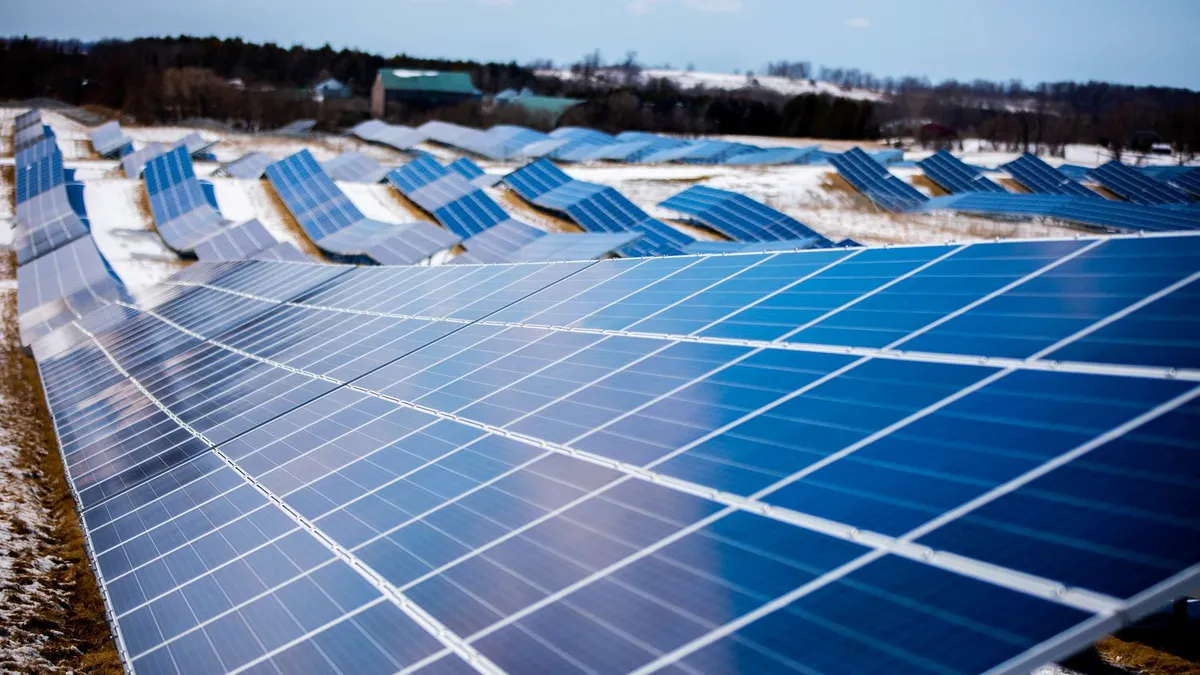Dive Brief:
- Solar capacity added in the U.S. declined by 17% in Q3 2022 compared to Q3 2021, with the market adding 4.6 GW, according to the 2022 U.S. Solar Market Insight by Wood Mackenzie and the Solar Energy Industries Association.
- Trade barriers and supply chain disruptions were the biggest contributors to the decline. Utility-scale installations were hit particularly hard, with a 36% decrease compared to the third quarter of 2021.
- Residential solar was the lone sector that gained in a “historic quarter,” with 1.57 GW installed in the third quarter of 2022, a 43% increase compared to the year-ago quarter and a 16% increase from the previous quarter.
Dive Insight:
Solar accounted for 45% of new electricity-generating capacity added to the U.S. grid in the third quarter of 2022, “more than any other electricity source,” a report from Wood Mackenzie and SEIA says. But the industry is on track to end its growth streak this fiscal year after a dismal first three quarters.
“Commercial, community and utility-scale solar were all down quarter-over-quarter — an unsurprising outcome given the nearly ubiquitous project delays from supply chain constraints,” the report says.
Utility-scale solar is now forecasted by Wood Mackenzie to total 10.3 GW in 2022, falling 40% compared to the 17 GW installed in 2021. In addition, 2021 utility-scale solar installations already fell short of forecasts by 3 GW due to multiple project delays as a result of cost increases.
In a release accompanying the report, SEIA President and CEO Abigail Ross Hopper blamed “unnecessary supply bottlenecks and trade restrictions” for the decline. These trade restrictions include solar equipment shipments being detained following the June implementation of the Uyghur Forced Labor Prevention Act (UFLPA).
The report’s authors also see “downside risk” as a result of the Department of Commerce’s preliminary determination to affirm that solar panels imported from certain Southeast Asian countries circumvented tariffs on Chinese-made solar components, though that decision came too late to be included in the report.
Residential solar “is less directly impacted by existing trade issues,” SEIA’s release says. As a result, quarterly installations of residential solar set a record at 1,568 MW, with California driving growth “as the industry rushes to capture sales before the state shifts to a new net metering policy,” the report says. Net metering allows solar users to earn credits for extra energy their panels send to the grid.
The outlook for the industry is in flux due to pressures such as the implementation of the UFLPA and the tariff case, which the Commerce Department is scheduled to release a final determination for on May 1.
Wood Mackenzie “expects the industry to remain supply-constrained through at least the second half of next year” as equipment importers “seek to provide the documentation needed for compliance with the UFLPA.” The report’s authors are optimistic about the solar industry’s recovery when supply pressures ease, saying that by 2024, the benefits to the solar industry created by the Inflation Reduction Act will “come to fruition.”
Wood Mackenzie projects that starting in 2024, “annual installations of solar will consistently reach 30-40 GW.”
The outlook does not account for potential new antidumping and countervailing duties, or AD/CVD, tariffs, that might result from the tariff case. The Biden administration has placed a two-year moratorium on new tariffs to buy time for the expansion of domestic solar, but that moratorium will expire June 2024.















